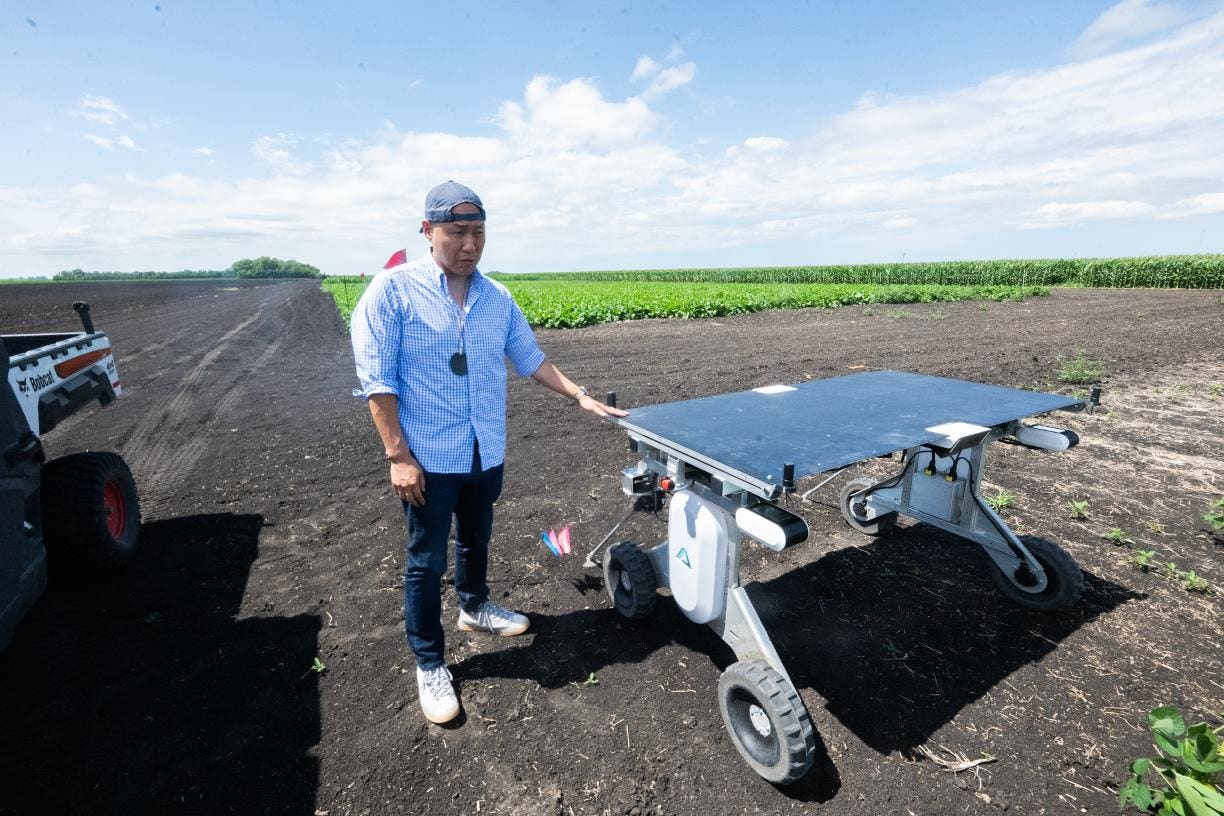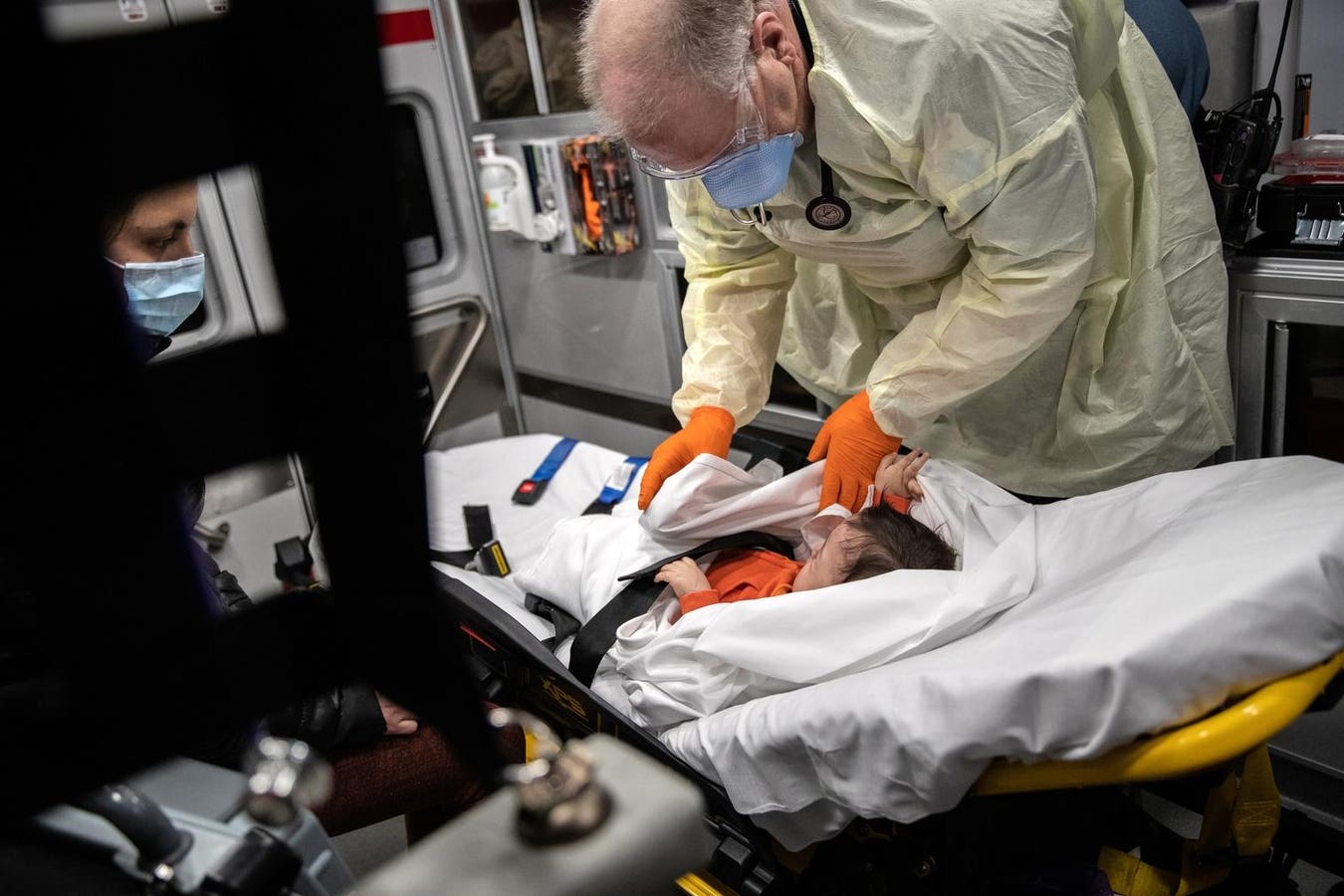Kenny Lee, CEO of Aigen with his low-energy robot.
Worldwide, weeding is a big business.
In general, it’s back-breaking labor – not the kind of thing that it’s particularly easy for humans to do.
In terms of market size, the global weeding market is worth around $42 billion, according to market estimates, out of a general global agriculture equipment market of $193 billion.
That provides a basic idea of just how much money is in this area of agriculture – but it’s really interesting to look at a number of technology trends that are having an effect on that age-old process of separating weeds from crops, something that humans had to do previously through hours of stooping and grasping isolated greens by the roots.
The Problem with Herbicides
Decades ago, agriculture moved away from the hand-weeding of crop areas, toward the specialized application of all kinds of herbicides. Now, most weeding is done on smaller or more specialized farms – big ag largely has herbicide methods in place to blanket-spray enormous crop fields.
But this came with well-documented problems – glyphosate as a carcinogen has been an enormous challenge for the industry, and other herbicides have their own drawbacks, too.
In addition, many weeds are now becoming herbicide-resistant, so that the traditional applications don’t even have the effect that they had before. Just take a look at international policy, corporate agriculture, and the body of literature around herbicides, and you’ll see just how problematic these processes have been and continue to be, and how new problems are developing.
A chart from Aigen shows how the company uses specific hardware to achieve a very low-energy … More
A New Solution: Robot Weeding
However, with the recent advances in AI and neural nets, a new solution is emerging. And it’s emerging quickly.
Throughout the last couple of decades, we gave robots and computers the means to “see” through sophisticated computer vision with convolutional neural networks. Now we have AI agent capabilities, allowing the same types of engines to discriminate between visual information in a task-based way. That’s perfect for the job of weeding.
I was excited to recently see a real-world application of this in the form of a project by the Aigen company, pioneered by a team including Kenny Lee, who has an executive MBA from MIT/Sloan and 20 years of experience in technology.
Along with former Tesla engineer Rich Wurden and others, Lee worked on a test robotics program where mobile robots are working land in the Red River Valley and Central California regions in a way that’s 100% autonomous, using edge AI solar energy power to do this kind of work efficiently, and on a leaner carbon footprint.
In North Dakota, Lee and Aigen have partnered with Grand Farm, a collaborative network working together to solve problems in agriculture using applied technology. Aigen has participated in Grand Farm’s field plot program on their 590 acre Innovation Campus just west of Fargo. The relationship also goes beyond the field, Grand Farm has helped Aigen build relationships with North Dakota State University researchers and access funding through state-supported initiatives. The partnership has helped Aigen go from idea to impact.
Grand Farm’s Innovation Shop, located on their 590-acre Innovation Campus just west of Fargo … More
“Think about a Mars rover for the Earth,” Lee said, unveiling how this robotic system works to replace costly and sometimes dangerous herbicides.
50 of these vehicles are currently weeding crop areas in what Lee calls a “huge opportunity for converting data to action using AI and robotics.”
But, he cautioned, it’s not just about data aggregation – there’s also implementation.
“Data alone is not useful for the farmers,” he said.
He explained that unlike a lot of more generic robotic tillers, these pieces of equipment mimic the human action in the weeding process, for more targeted results.
He mentioned the big value in replacing outdated herbicide application methods.
“(Herbicides are) a huge problem for growers across the world,” he said.
Under the Hood
Lee explained that because the vehicles use a “true solar” approach, with real-time solar power processing, and batteries as backups, they are able to operate on only 6 watts, a tiny amount of electrical juice.
Part of that, he said, involves taking advantage of quantization, where new lower-bit models have helped innovators bring LLMs to autonomous devices with an edge AI approach.
The solar system, he said, runs on an additional 200 watts. That’s still low.
As we watched the mechanical systems scour the crop land, Lee discussed how farmers are embracing this technology, realizing that they may be able to save enormous amounts of money and enhance their reputations, too, with thought leadership that addresses how agriculture is changing so quickly.
It’s not hard to imagine the future crop lands of the world being dotted with these roving weeding machines, rather than herbicide sprayers. It was exciting to see these machines in action, and understand what they mean for agriculture.
What’s very exciting, too, is the health benefits that would come along with this innovation – for the planet, for the people, and for a more chemical-free future.









